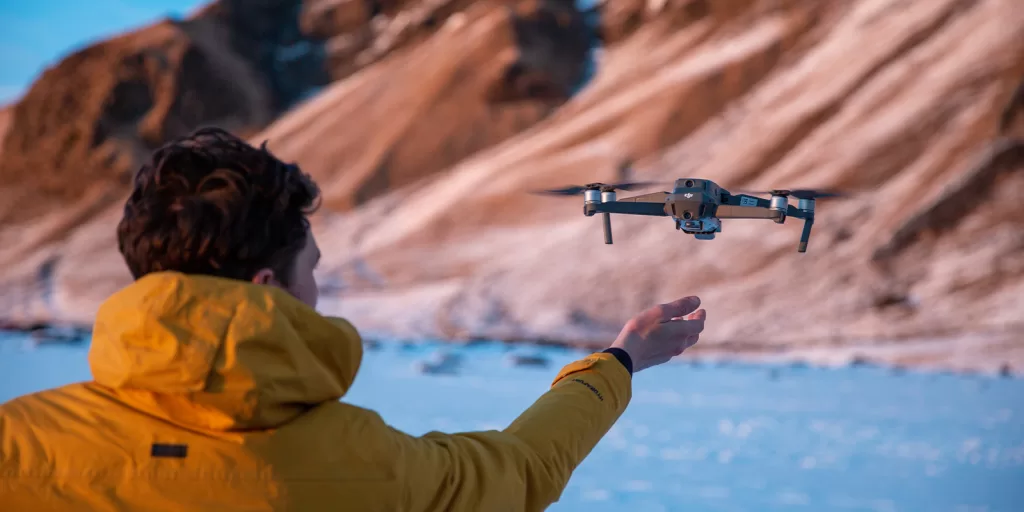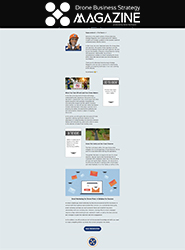
As the world of drones continues to soar to new heights, there’s an impending revolution on the horizon: the implementation of Drone Remote Identification (Remote ID). While its arrival may have experienced a slight delay, the FAA’s commitment to integrating drones safely into our skies remains steadfast.
In this article, we’ll delve into the intricacies of Remote ID, exploring why it’s not just a regulatory requirement but a pivotal catalyst for innovation and security within the drone community. Whether you’re a recreational enthusiast, a business operator, or a public safety professional, it’s time to prepare strategically for the inevitable transformation of the drone industry.
Are You Prepared?
The FAA remains steadfast in its commitment to safely integrate drones into airspace and foster technological advancements that lay the foundation for more complex operations. Remote Identification (Remote ID) plays a pivotal role in accelerating innovation within the drone community while upholding the safety of the National Airspace System (NAS).
Remote ID refers to a drone’s ability to provide identification and location information while in flight, which can be received by others through a broadcast signal.
Why Do We Need Remote ID?
Remote ID sets the stage for safety and security in more intricate drone operations, such as drone deliveries and beyond-visual-line-of-sight flights. It also aids the FAA, law enforcement, and federal agencies in investigating instances of drones flying unsafely or in restricted airspace.
Getting Ready for Remote ID
Which Drones Must Comply with the Rule?
Starting September 16, 2023, all drones that require registration, regardless of whether they are used for recreation, business, or public safety, must operate in accordance with the Remote ID rule. This commencement date may now be delayed. The FAA will advise accordingly in the next few days. Be on the lookout for any news updates!
Registering Your Drones
For recreational drone pilots, a single registration covers all drones in their inventory. During registration, you must list the serial numbers of each Standard Remote ID drone and/or the Remote ID broadcast module. If you use a Remote ID broadcast module, ensure that the module’s Remote ID serial number is listed for each drone that lacks Standard Remote ID in your inventory. This allows you to transfer the module among drones, as long as they share the same make and model, all within the same inventory.
However, for drones flown under 14 CFR Part 107, each drone must be registered individually, and each drone receives a unique registration number.
Important! Before You Begin
Make sure your drone is listed on an FAA-accepted Remote ID Declaration of Compliance. Keep your Remote ID serial number handy; it differs from your drone’s serial number. If you’re unsure how to locate it, reach out to the manufacturer for assistance.
Becoming Remote ID Compliant
Drone pilots have three options to meet the identification requirements of the Remote ID rule:

1. Operate a Standard Remote ID drone with built-in Remote ID broadcast capabilities in compliance with the Remote ID rule. These drones continuously broadcast:
- Drone ID (serial number)
- Drone location and altitude
- Drone velocity
- Control station location and elevation
- Time mark
- Emergency status
2. Operate a drone with a Remote ID broadcast module, an additional device that retrofits your drone with Remote ID capabilities. Pilots using this option must maintain visual contact with their drone throughout the flight. The module broadcasts:
- Drone ID (serial number)
- Drone location and altitude
- Drone velocity
- Takeoff location and elevation
- Time mark
3. Operate without Remote ID equipment exclusively at FAA-Recognized Identification Areas (FRIAs) sponsored by FAA-recognized community-based organizations (CBOs) or educational institutions. FRIAs are the only locations where drones can operate without broadcasting Remote ID.
Session ID
In the future, operators of Standard Remote ID Drones may have the option to choose between broadcasting their drone’s ID (serial number) or a Session ID. The FAA is developing a strategy for assigning Session IDs to drone pilots, taking existing policies into account, and will seek public input before finalizing this policy. The Session ID will be uniquely identifiable, allowing law enforcement and the FAA to correlate each Session ID with a specific drone’s registration, though this information will not be publicly available.
Registering for Recreational Flyers
Recreational flyers need to add each Standard Remote ID drone and/or the Remote ID broadcast module to their inventory and, if applicable, remove the drone it replaces.
Please Note: If you previously listed a drone and answered “No” to the Remote ID question, you will need to create a new listing for the same drone.
Registering for Recreational Flyers
Recreational flyers need to add each Standard Remote ID drone and/or the Remote ID broadcast module to their inventory and, if applicable, remove the drone it replaces.
Please Note: If you previously listed a drone and answered “No” to the Remote ID question, you will need to create a new listing for the same drone.
Conclusion: The Takeaway
The advent of Drone Remote Identification (Remote ID) is rapidly approaching, promising to reshape the landscape of the drone industry. While a short delay may be apparent, the FAA’s commitment to safely integrating drones into our airspace remains unwavering. Remote ID is not just a regulatory requirement; it’s a vital enabler of innovation and security within the drone community.
As drone operators, it is incumbent upon us to prepare strategically for this imminent change. By understanding the nuances of Remote ID compliance, choosing the right equipment, and staying informed about evolving policies, we can ensure a smooth transition into this new era of drone operations.
Remote ID is not merely a set of rules; it’s a key that unlocks the doors to more advanced and secure drone operations, from deliveries to beyond-visual-line-of-sight flights. It empowers us to navigate the skies with responsibility and accountability, ensuring the safety of the National Airspace System.
So, whether you’re a recreational enthusiast, a business operator, or a public safety professional, the message is clear: get Remote ID ready. The future of drone technology is on the horizon, and by embracing Remote ID, we are not only complying with regulations but also setting the stage for a safer, more innovative, and more inclusive drone industry.
Be smart, safe, and forever fly!
If you have any questions, let us know! If you’d like to hire us, you can get more information here.
Written by: Tony Marino, MBA – FAA Certified Part 107 Commercial Drone Pilot and Chief Business Strategist at Aerial Northwest
Resources
Got Questions?
Contact the UAS Support Center: 1-844-FLY MY-UA (844-359-6982)
Email: UAShelp@faa.gov
Disclaimer: The information provided in this blog post is for general informational purposes only and should not be construed as legal advice.

DRONE BUSINESS STRATEGY MAGAZINE
A free digital publication made exclusively for all small business drone pilots to them help start-up, become profitable while sustaining a competitive advantage within the drone service industry sector they opt to serve.
“If you love to fly, we’d love to have you come aboard!”
We share your information with no one. Our Privacy Policy.









Leave a Reply
Your email is always safe with us.